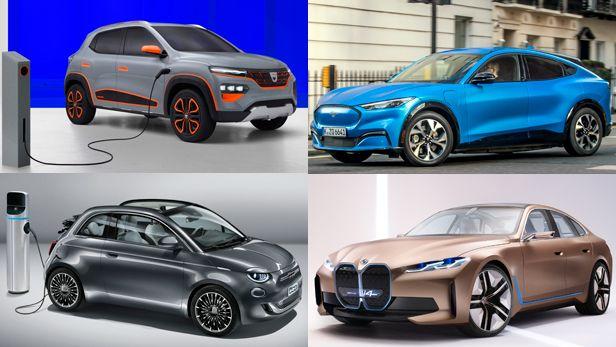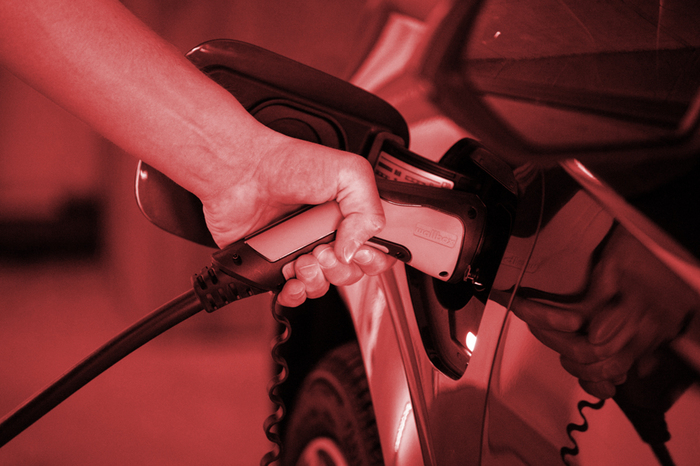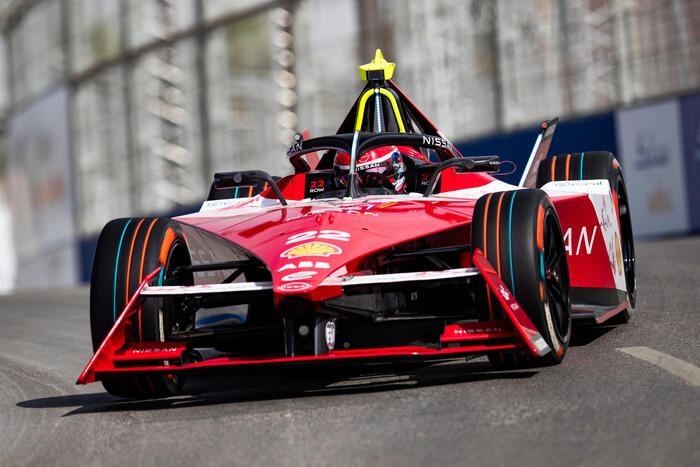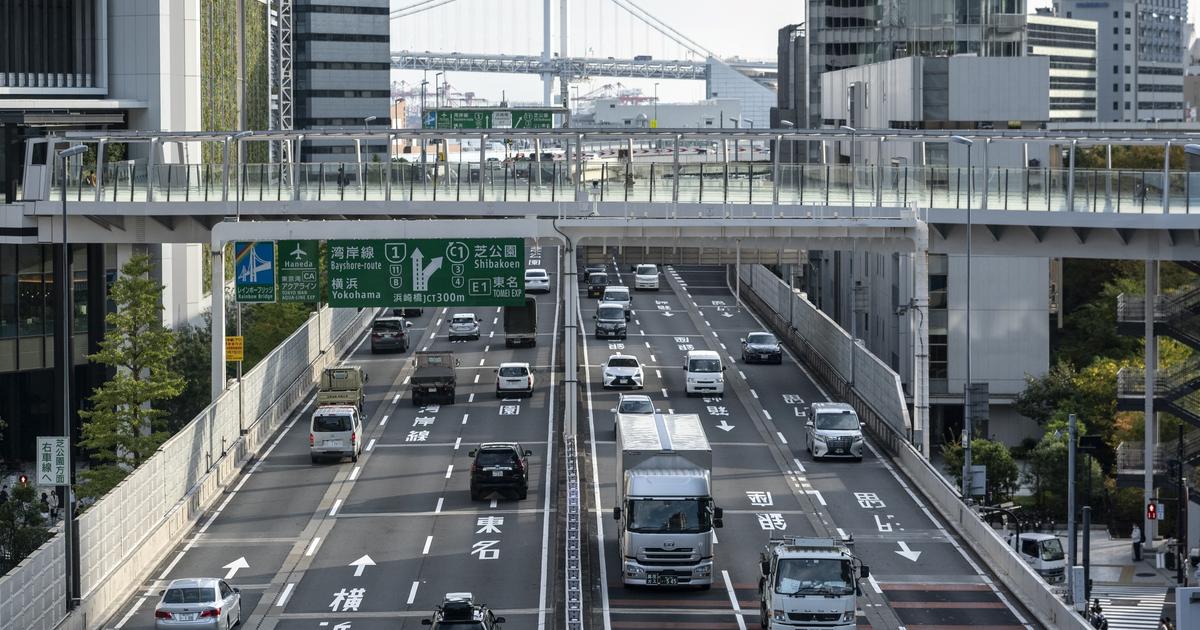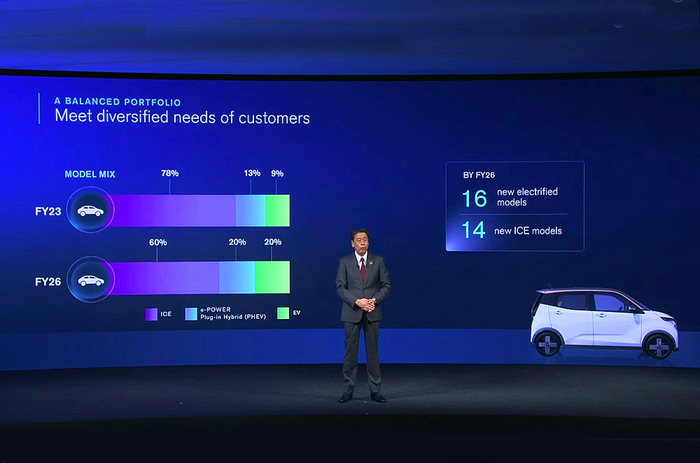The manufacturers have released their calculators. The stakes are high: lower the average CO2 emissions of their vehicles sold to 95 g / km. The main consequence of a dieselgate still in everyone's memory and imposed by a European Commission which acts as a vindicator, exceeding this threshold exposes market players to heavy fines: 95 euros per additional gram and per vehicle sold. Not all manufacturers start on the same starting line. Some are better off than others because of the physiognomy of their ranges and technological bets operated in recent years. In this little game, electricity is a significant ally. This year, vehicles emitting less than 50 g / km of CO2 count double in the calculation of CO2 emissions. For not having sufficiently anticipated these new European standards, a handful of manufacturers find themselves really exposed due to an energy-consuming range, the drop in sales of diesel models, about to be banned by an ever-increasing number of cities, as well as the entry into force of the new WLTP standard for approving consumption and emissions, which changes the current balance. In this somewhat schizophrenic context, electricity looks like a lifeline. Announced long ago, the electric wave is about to overwhelm the market. Few vehicles will escape the injection of a more or less significant dose of watts. A new generation of electrified vehicles is already flooding the market. Motorists will be spoiled for choice between the different solutions offered by hybrid technology - light, full or rechargeable - and pure electric. We will exclude here the hydrogen vehicle, which is in fact electric, but which is only offered here as part of experiments or in a confidential manner.
Renault and PSa follow divergent strategies
The Renault Mégane station wagon E-Tech plug-in hybrid. Renault
The two French groups fully intend to take the lead in this offensive. Renault has thus announced a program of 13 electrified models including four 100% electric vehicles by 2022. This offensive will pass at the end of the year by the marketing of a Twingo ZE. Designed from the outset to receive a battery, this version inherits the technology of its cousin, the Smart Forfour EQ, with the exception of its battery with a capacity of 21.3 kWh instead of 17.6 kWh. Autonomy should therefore be around 180 km (WLTP). The year 2020 will also see the launch in June of a hybrid Clio borrowing its technology from the Eolab prototype of 2014. It combines the 4-cylinder 1.6 liter atmospheric 91 hp original Nissan with two electric machines, an alternator-starter of 15 kW and an electric motor of 35 kW, both installed in the multi-mode clutch gearbox and without clutch. The whole is powered by a 1.2 kWh lithium-ion battery. The fuel economy would be around 15% in the combined cycle and more than 30% on urban journeys compared to a 1.3 TCe. This will be followed by a Captur and a Megane station wagon distinguished from the Clio by a larger capacity battery (9.8 kW) which recharges on the sector and allows a zero emission action range of around 50 km. The set has a power of 160 hp and CO2 emissions between 32 g / km for the urban SUV and less than 40 g / km for the Mégane Plug-in hybrid station wagon that precedes the sedan by a few months. During the virtual Geneva show, Renault also lifted the veil on its electric future with two concept cars: the Morphoz which foreshadows its next wagon and the Dacia Spring Electric which announces a cheap zero emission model within low cost brands of the 'Alliance.
The Peugeot 508 PSE. Peugeot
For its part, the PSA group has warned that its range will be 100% electrified from 2025. By the end of 2021, the milestone of half will be crossed. Since 2019, all of its new models have been available in rechargeable hybrid or 100% electric versions. Depending on the segments and ranges, the Sochaux manufacturer chooses the best solution. Citroën is preparing to market a 225 hp rechargeable hybrid version of the C5 Aircross and a 2.41 m electric cart. Called Friend, this 6 kW car can be driven from 14 years old. In this early spring, DS presented two vehicles. The first is a large sedan of 4.93 m which will be marketed later this year with plug-in hybrid powertrains of 225, 250 and even 360 hp. The second is an electric concept of 680 hp which announces a high-end electrified crossover.
The Jeep Renegade plug-in hybrid. Jeep
The merger of PSA with the FiatChrysler Automobiles group could lead to a strategic shift. The Italian-American manufacturer will launch this year at Fiat several electrified models: an electric 500, a 500 and a Panda with light hybridization. For its part, Jeep arrives with Renegade, Compass and Wrangler in plug-in hybrid. Baptized 4xe-hybrid, the first two claim a power of 240 hp thanks to the combination of their 1.3 liter petrol and the electric motor placed on the rear axle.
The Volkswagen ID range. Volkswagen AG / Volkswagen AG
The sportswomen concerned
The CO2 emissions will be less than 50 g / km for the Renegade and the electric range will be around 50 km. As for Maserati, it has invested 3 billion euros in a vast plan which will include the launch of a grand touring electric car and a Ghibli with light hybridization in 2020. Still in Emilia-Romagna but at Ferrari, the fairy electricity allows the supercar SF90 Stradale to display a power of 1000 ch and an electric autonomy of 25 km thanks to its rechargeable batteries on the sector. But the firm of Maranello is supplanted in the race for overbidding.
The Lotus Evija. John Wycherley
With their supercars Battista and Evija, Pininfarina and Lotus claim an electrical power of 1,877 and 2,000 hp respectively. While taking the risk of giving up their melodies which have captivated amateurs for a long time, sportswomen could thus buy a pipe thanks to electrification. Porsche is also developing an electric range after having marketed plug-in hybrid versions of the Cayenne and Panamera. The Taycan family will thus give birth to a 4S version (530 hp and 79.2 kWh battery) and a crossover. These models are part of the vast seduction operation undertaken by the Volkswagen group to restore its damaged image since the diesel scandal. The brand has programmed no less than 80 electrified vehicles, fifty of which are 100% electric by 2025. To make you dizzy. This large-scale electrification strategy will mainly rely on the new modular MEB electrical platform. The arrival of the family's first vehicle, the Volkswagen ID.3, could be postponed due to software problems. Two power levels (150 or 204 hp) and three versions of batteries will be available - 45, 58 or 77 kWh -, which corresponds to the respective ranges of 330, 420 or 550 km. Based on the ID concept. Crozz de SUV, ID.4 will see the light at the end of 2020. An electric Combi, a station wagon and another SUV will follow one another. Seat and Skoda will benefit greatly from the group's developments by each integrating an electric city car in the course of 2020. Rechargeable hybrid versions will complete the offer. At Skoda, the Superb (sedan and station wagon) will have a 218 hp rechargeable hybrid engine in the first half of 2020. CO2 emissions will be less than 35 g / km and the range will be 850 km, including 56 km in electric. The Spanish brand has planned six rechargeable electric and hybrid models by 2021. Depending on technology and bodywork, these vehicles will be marketed under the Seat or Cupra badge. Seat should open the ball of electrified SUVs on the MQB platform, before the Volkswagen Tiguan Allspace and the Skoda Kodiaq. These three recreational vehicles will share the same rechargeable hybrid powertrain. It combines the 4-cylinder 150 hp TSI with an 85 kW (116 hp) electric motor.
The Cupra Formentor plug-in hybrid. Cupra
Varied architectures
The combined power comes out at 245 hp while the CO2 emissions will be less than 50 g. This is the technical solution chosen for the first version of the Cupra Leon. Audi is also involved in reducing the carbon footprint of the Volkswagen group. The Ingolstadt firm intends to introduce more than 30 electrified models to the market by 2025 using four platforms (MLB Evo, MEB, PPE and PHEV). In a few weeks, the brand with the rings will extend its portfolio of plug-in hybrids with the A7 Sportback 55 TFSI e quattro and Q5 55 TFSI e quattro which will share a 4-cylinder 2 liter TFSI, while the A8 L 60 TFSI e quattro and Q7 60 TFSI e quattro will be powered by a 3-liter TFSI V6. The e-tron Sportback, the second electric vehicle will soon arrive on the market. The two Audi electric models will be available in an S version. Their particularity: three engines for a cumulative power of 503 hp (973 Nm of torque) and an all-wheel drive coupled with a variable distribution of torque on the rear.
Mercedes GLA and CLA plug-in hybrids. Mercedes-Benz AG - Global Communications Mercedes-Benz Cars & Vans / Daimler AG
For its part, Bentley markets the Bentayga in a plug-in hybrid version. Also at Mercedes, electrified models will multiply. This year, the firm with the star will double its offer of rechargeable hybrid versions to bring it to 20, with at least one model per category. The Class A and B but also the CLA Coupé, CLA Shooting Brake and GLA 1.3 liter will receive an electric motor of 75 kW and a battery of 15.6 kWh. Result: CO2 emissions of 33 g, i.e. a consumption of 1.3 l / 100 km. The flagship of this fleet will be the large SUV GLE 350de. Mercedes succeeds in the feat of announcing a consumption of only 1.1 l / 100 km, CO2 emissions of 29 g and a record electric range of 106 km thanks to a large capacity battery (31.2 kWh). The light hybridization with 48 V battery also continues its breakthrough, primarily on very powerful engines but also on the 4-cylinder 2-liter petrol (200 kW + 15 kW) which invests in the restyled E-Class. The 100% electric EQ family also aims to expand. The compact model will be produced in France, in the Smart factory in Hambach.
Audi e-Tron Sportback. AUDI AG / AUDI AG
BMW responds to Tesla
Pioneer of premium brands in electromobility, the BMW group has decided to accelerate the deployment of its plan for 25 electrified vehicles. More than half of the program will be made up of 100% electric models. By 2021, the German group plans to double sales of its electrified range. Until 2025, he estimates that they will grow by 30% per year. With the arrival of a 3 Series station wagon, X1, X2 and X3, almost all series will have a plug-in hybrid version. On the electrical side, in addition to the Mini Cooper SE already available (184 hp, 32.6 kWh battery and 235 km range), the Munich group will launch an iX3. It is also the first to respond to the Tesla Model 3 with its i4 sedan. Scheduled for 2021, this 4.81 m vehicle announces a power of 530 hp, a battery of 80 kWh and a range greater than 600 km. Thanks to its architecture, the i4 boasts record habitability.
The electric Volvo XC40 launched in early 2021. Volvo
At Ford, the milestone of 50% of electrified vehicles will be crossed by 2022. To get there, each new model will be available in one or more electrified versions (light hybrid, hybrid, rechargeable hybrid or 100% electric). While the city SUV Puma benefits from light hybridization, the Kuga will be rechargeable hybrid. The year 2020 will also be marked by the arrival of a 100% electric SUV bearing the Mustang badge. This Ford Mach-E will be available in a multitude of variants: two or four-wheel drive (258 to 337 hp), two levels of autonomy (75.7 or 98.8 kWh battery). A former ally of the firm with the blue oval, Volvo was one of the first to take the train of electrification. The S60 sedan is therefore only offered as a plug-in hybrid. A technology that also invests the hood of the XC40. Accessibility to the brand also involves micro-hybridization (48-volt battery) of the 4-cylinder 2-liter petrol or diesel engines of the XC60 and XC90 (B4 and B5). This system reduces consumption by around 15%. The end of the year will be marked by the first steps on the electric market with the entry into the scene of the high-end label Polestar and a zero emission XC40 based on the modular platform also used by the Polestar 2 On the other side of the Channel, the Jaguar Land Rover group will multiply initiatives to reduce its carbon footprint, notably with a Range Rover Evoque plug-in hybrid.
Leading Asian manufacturers
The Lexus UX300e, the manufacturer's first 100% electric vehicle. Lexus
Among the first to believe in the future of electromobility, Asian manufacturers will continue to accelerate. Champion of the hybrid, Toyota focuses on optimizing its technology while continuing to study other technical solutions. The CH-R goes upmarket with a hybrid engine of 184 hp (119 g in WLTP) while the Valenciennes plant is preparing to welcome the fourth generation of the city car Yaris based on a new GA-B platform and an urban SUV. These two vehicles will share the same hybrid powertrain. From next September, a 306 hp rechargeable Rav4 hybrid claiming CO2 emissions of less than 30 g will take over our roads.
The Mazda MX-30. Mazda
For its part, Honda has planned to market the majority of its models in an electrified version by the end of 2022. The first step begins this year with the launch of the city car “e” and the Jazz hybrid. Four new vehicles will follow, including an SUV and a 100% electric model. For Mazda, entry into the zero emission market is planned for next September with the MX-30, a 4.39 m crossover with antagonistic doors. Its electric machine is powered by a 35.8 kWh battery. As for Mitsubishi, its short-term program includes the launch of two plug-in hybrid models, including the next Outlander, based on an Alliance platform with Renault and Nissan. The latter refines the development of the Ariya, an electric SUV planned for the end of 2020. Suzuki also contributes to the reduction of the carbon footprint by equipping the Swift Sport, the Vitara and the S-Cross with the 1.4 Light Hybrid BoosterJet 48 V.
The Kia XCeed plug-in hybrid. Kia
For its part, the Korean group Hyundai-Kia will increase its supply of electrified vehicles to 38 by 2025, including 14 zero emission models. At Hyundai, the style of its electric cars will feed on the concept 45 of Frankfurt but also on the Prophecy study. For its part, Kia is expanding its portfolio with a plug-in hybrid version of the XCeed and the Ceed SW. The chosen technology, combining a 1.6-liter 4-cylinder petrol engine, a 44.5 kW electric motor and an 8.9 kWh battery, allows an electric range of almost 60 km. A range that the new Sorento, launched in the second half of 2020, will be able to guarantee. Its cumulative power will exceed 200 hp.
The influx of battery models is not about to slow down. Unless the flip-flops of our leaders, compliance with the 2025 CO2 targets imposing a further drop of 15%, or a limit of 81 g / km on average, will impose an explosion of electrified vehicles in the coming years.

